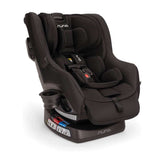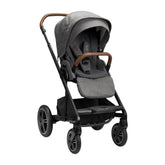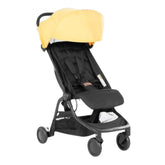Should You Clean Your Child's Ears? Here's What Experts Say

One of the most common questions parents have at the pediatrician's office is whether they should clean their child's ears and, if so, the right way to do it. While looking at a bunch of gunky wax in your kid's ear isn’t really visually appealing, earwax actually serves an important protective function and is usually harmless. That said, there are instances where it can accumulate and potentially affect ear health or raise concerns. In such cases, it's essential to remove it correctly. Let’s take a closer look at cleaning children’s ears, safe ear-cleaning methods, and when it's advisable to consult your pediatrician.
Should You Clean Your Child's Ears?
Earwax, medically known as cerumen, is produced within the outer ear canal, which is the region between the fleshy exterior of the ear and the middle ear. Its essential functions include creating a waterproof barrier within the ear canal, and safeguarding it and the eardrum from harmful germs that can lead to infections. Earwax also serves as a protective mechanism by entrapping dirt, dust, and other particles, preventing them from harming or irritating the eardrum.
As earwax forms, it gradually moves through the outer ear canal towards the ear's opening. Eventually, it either naturally falls out or is expelled during bathing. For most people, the outer ear canal continuously produces earwax, ensuring that an adequate amount is always present within the canal to fulfill its protective roles. Generally, there's no need to clean your child's ears. If the earwax isn't causing any discomfort for your child, it's best to leave it be.
However, if an excessive amount of earwax accumulates, it can become impacted and lead to hearing issues or other troublesome symptoms. Excessive earwax can block the ear canal, resulting in difficulties like hearing impairment, ringing in the ears, a sense of fullness, discharge, pain, itching, unpleasant odor, and even coughing. On rare occasions, excessive earwax may induce dizziness and balance problems. Although these symptoms are typically temporary, they can be alleviated by removing the surplus earwax. If a blockage or impaction occurs, it's essential to contact your child's pediatrician for proper removal.
The ultimate booger-busting team brings you FridaBaby 3-in-1 Nose, Nail & Ear Picker. It's as grossly satisfying as sucking snot, but perfectly designed to clean crusties + gunk out of all bodily crevices. Safety design ensures tip from going in too far up the nose and ear.

FridaBaby 3-in-1 Nose, Nail & Ear Picker
Safe Ways to Clean Your Child’s Ears
If your child has visible earwax at the entrance of their ear canal and it's not causing any discomfort, there are safe methods you can use to remove it at home. However, if the situation is more severe, consult your pediatrician. Here are a few various home-based approaches you can attempt, along with the potential methods your child's healthcare provider might use.
Use a damp washcloth.
The simplest way to safely and effectively clean your child's ears is by using a damp washcloth and water. It's advisable to use a moistened washcloth to gently clean only the external part of their ears. An ideal time to do this is during your child's warm bath or shower, as the warmth helps soften the earwax and facilitates the cleaning process.
Tilt the head after a bath.
You can assist your child's natural earwax removal process by instructing them to tilt their head gently from one side to the other after a bath or shower. This movement can help drain any lingering water and loosened wax from their ears.
Apply drops of ear wax softener or hydrogen peroxide.
For children prone to cerumen impaction (earwax blockage), some doctors suggest a gentle approach of applying hydrogen peroxide or Debrox administered with an eyedropper (a few drops). This helps soften the earwax, making it easier for the ear's natural mechanisms to expel it, which can then be removed with a washcloth.
It's important to exercise caution when considering any over-the-counter options, as some of these products might lead to complications. One example is ear candling, a practice that claims to remove earwax by using a candle-like device to "vacuum" it out. The FDA strongly advises against ear candling due to the high risk of burns and ear damage. It's always advisable to consult with your pediatrician or a pediatric ear, nose, and throat specialist before using any at-home earwax removal products.
Have a doctor remove the wax.
If your child shows symptoms of earwax blockage, a pediatrician or pediatric ear, nose, and throat specialist (ENT) can use specialized instruments to safely address the issue. This may involve suctioning, scooping, or gently removing the blockage. They may also consider methods such as flushing the ears with warm water, using wax-softening drops, or prescribing drops for home use. In severe cases, or if your child has difficulty staying still during the procedure, stubborn earwax can be removed in an operating room while your child is under general anesthesia.

Is It Safe to Use Cotton Swabs to Clean the Ears?
Using cotton swabs, like Q-tips, to clean ears is a risky practice for both adults and children. They are not designed for use in the ear canal and can lead to several problems. Inserting cotton swabs in the ears can push earwax deeper into the canal, potentially causing damage to the ear canal and eardrum. This can result in pain, bleeding, infection, eardrum perforation, and even permanent hearing loss. In fact, pediatric ear injuries due to cotton swabs are a frequent occurrence in emergency rooms, according to The Journal of Pediatrics.
The medical community unanimously discourages the use of cotton swabs for ear cleaning, and the packaging of these products explicitly states that they should not be used in the ears. It’s essential to avoid using cotton swabs in your own ears, particularly in front of your child, as they may imitate your behavior. Remember the adage: "Never put anything smaller than your elbow inside your ear or your child's." While your elbow would never fit in an ear canal, the message underscores the importance of refraining from inserting any objects into the ears.
The Takeaway on Cleaning Your Child's Ears
In most cases, cleaning inside your child's ears is unnecessary. Nevertheless, if you notice visible excess earwax or if it's causing discomfort, there are safe methods for at-home removal. However, if your child experiences hearing problems, ringing in the ears, sensations of fullness, discharge, pain, itching, odor, coughing, or balance issues, it's crucial to consult with their pediatrician or a pediatric ear, nose, and throat specialist for professional guidance.









